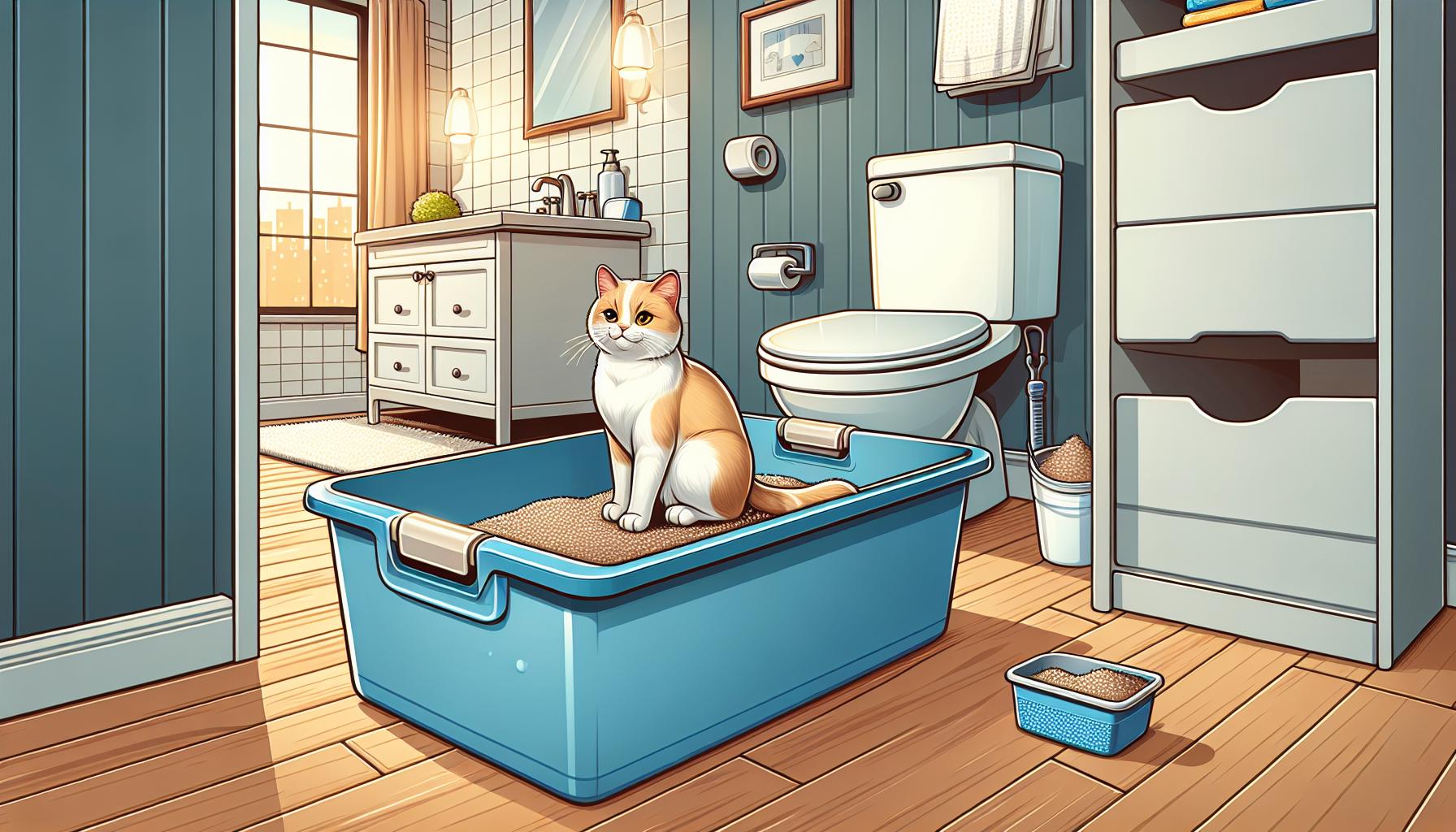Switching your cat to a new litter box can feel like a daunting task. Cats are creatures of habit, and any change to their routine might leave them confused or even resistant. I’ve been there, watching my cat stare at the shiny new box like it’s an alien spaceship. But with the right approach, you can make the transition smooth and stress-free for both of you.
Understanding Your Cat’s Behavior
Cats rely heavily on routine, making sudden changes to their environment unsettling. They may view a new litter box, especially one with a different design, material, or location, as unfamiliar and potentially threatening.
Sense of smell plays a significant role in a cat’s comfort. Cats use scent markers to identify safe spaces, so a completely new litter box without their familiar scent can feel foreign. Adding a small amount of used litter to the new box can help bridge this gap.
Territorial instincts often influence how cats respond to environmental changes. A new litter box might disrupt their perception of ownership over their space. To ease this, place the new box close to the old one initially, gradually transitioning its location.
Some cats exhibit neophobia, which is a fear of new things. This is especially common in older cats who have become set in their routines. Understanding this helps in creating a gradual and patient introduction to the new box.
By recognizing these behavioral patterns, I can tailor my approach to match my cat’s unique personality and preferences.
Choosing the Right Litter Box

The right litter box can significantly impact how easily a cat accepts the change. Factors like size, shape, and placement influence a cat’s comfort and willingness to use the new box.
Size and Shape Considerations
A litter box should accommodate the cat’s full body, allowing enough space for turning and digging. For large breeds like Maine Coons, oversized boxes ensure comfort. Low-sided boxes help kittens or elderly cats with mobility challenges, while hooded boxes offer privacy but might feel confining to some cats. Observing how a cat uses its current box helps in selecting the most suitable design.
Location Matters
Placing the litter box in a low-traffic, quiet area ensures the cat feels secure while using it. Accessibility is crucial; multi-story homes should have a box on each level. Keeping it away from food, water, and loud appliances avoids stress and maintains hygiene. If relocating a box, gradual movement over several days prevents confusion.
Selecting the Best Litter

Choosing the right litter plays a critical role in encouraging a cat to use a new litter box. Factors such as scent, texture, and type directly impact a cat’s comfort and willingness to adapt.
Unscented vs. Scented Litter
Cats generally prefer unscented litter because they have a strong sense of smell. Artificial scents might deter them if the fragrance is overpowering. I recommend avoiding scented varieties for sensitive cats to ensure familiarity and comfort. For multi-cat households, unscented, clumping litter minimizes odors while keeping the environment cat-friendly.
Texture and Type Preferences
Texture significantly affects how cats interact with litter. Many cats favor fine-grain, soft litter that feels more natural under their paws. If clumping litter is used, it should form solid clumps for easy cleaning. Alternatives like recycled paper or silica gel may suit specific needs, but testing a small amount first identifies if it’s acceptable.
Introducing the New Litter Box

Switching to a new litter box can overwhelm a cat if not handled carefully. Introducing it gradually and creating positive associations increases the chances of success.
Gradual Transition Tips
I place the new litter box next to the old one and leave them both accessible for a few days. This gives the cat time to explore the new box at their own pace. If the cat shows interest, I transfer some used litter from the old box to the new one. Familiar scents act as a marker, signaling it’s safe and acceptable to use. Once the cat consistently uses the new box, I remove the old one.
I avoid abrupt changes in litter box location, as cats need consistency to feel secure. If relocation is necessary, I move the box gradually over several days, shifting its position a few feet daily toward the new spot.
Positive Reinforcements
I praise and reward my cat when they approach or use the new litter box. Treats or affection reinforce positive behavior, making the transition smoother. Immediate rewards strengthen the association between the new box and positive experiences.
I ensure the litter box area remains calm and stress-free. Household disturbances or loud noises may deter a cat from exploring a new box, reducing its effectiveness.
Troubleshooting Common Issues

Helping a cat transition to a new litter box can come with challenges. Addressing resistance and managing dynamics in multi-cat households ensures a smoother process.
Addressing Resistance
Resistance often stems from discomfort or distrust of the new setup. I identify potential triggers, such as scent or placement, and make adjustments. For example, if a cat avoids the box due to an unfamiliar smell, I mix in a small amount of used litter to establish familiarity. When placement is the issue, I experiment with different quiet locations to find one they prefer.
Consistency matters. I avoid switching boxes or litter types frequently, allowing the cat time to adjust. If anxiety persists, I use calming aids like pheromone sprays around the box to reduce stress levels.
Managing Multi-Cat Households
Each cat needs access to their own litter box. I follow the one-box-per-cat rule, plus one additional box, to prevent territorial disputes. Placing the litter boxes throughout various areas of the home ensures every cat feels included and has an accessible option.
I monitor interactions between cats to identify resource guarding. When one cat prevents another from using a box, I maintain separation by relocating specific boxes to different rooms. This fosters harmony and ensures all cats feel secure using their designated spaces.
Maintenance and Cleaning Tips

Frequent cleaning keeps the litter box appealing to cats. I scoop out waste daily to maintain freshness and prevent odors. For multi-cat households, I clean at least twice a day, as shared usage increases waste and odor buildup.
Deep cleaning ensures hygiene. I empty the litter completely every 1-2 weeks or when it smells despite scooping. After emptying, I scrub the box with unscented soap and warm water, avoiding strong chemicals that might deter the cat.
Replacing litter regularly prevents aversion. I refresh the litter in layers to retain familiar scents but avoid leaving used litter too long as it could lead to rejection. Consistent care reassures the cat that the box is clean and safe.
Monitoring for wear protects comfort. I check the box for scratches or odors embedded in the material, as these can repel cats. If the box shows signs of damage, I replace it to ensure the cat feels comfortable using it.
Proper disposal minimizes stress. I discard waste in sealed bags to avoid attracting insects or creating bad smells near the litter box area, maintaining a pleasant environment for the cat.
Conclusion
Helping your cat adjust to a new litter box takes patience, understanding, and a bit of trial and error. Every cat is unique, so finding the right combination of box, location, and litter is key to a smooth transition. By staying consistent and attentive to your cat’s needs, you can create a comfortable and stress-free experience for both of you. Remember, small adjustments and positive reinforcement can make a big difference in helping your cat feel secure and confident with their new setup.
Frequently Asked Questions
Why do cats resist using a new litter box?
Cats are creatures of habit and may resist changes in their routine. They could be uncomfortable with the box’s size, shape, placement, or the litter’s scent or texture. Additionally, unfamiliar scents and neophobia, especially in older cats, can deter them from using a new setup.
How can I introduce a new litter box to my cat?
Place the new litter box next to the old one for a few days. Allow the cat to explore it at their own pace. Adding some used litter to the new box can create a familiar scent. Use positive reinforcement like treats and praise when they show interest.
Where should I place the new litter box?
Position the litter box in a quiet, low-traffic area where your cat feels safe. Avoid placing it near food, water, or loud appliances. In multi-story homes, ensure boxes are easily accessible on different levels.
What type of litter do cats prefer?
Most cats prefer unscented, clumping litter with a fine-grain texture. Avoid overly scented or coarse litters, as they may irritate your cat’s sensitive paws or strong sense of smell.
What size and shape should the litter box be?
Choose a litter box large enough for your cat to move comfortably. Large breeds may need oversized boxes, while kittens or elderly cats might benefit from low-sided options for easier access.
How do I prevent litter box conflicts in a multi-cat household?
Follow the one-box-per-cat rule, plus an extra box. Place boxes in separate, accessible areas to avoid territorial disputes. Monitor interactions to ensure harmony and prevent resource guarding.
Why is daily litter box cleaning important?
Frequent cleaning prevents odors and keeps the box appealing to your cat. Scoop daily and deep-clean the box every 1-2 weeks to maintain hygiene. Regularly replace litter to avoid aversion.
What should I do if my cat refuses the new litter box?
Check for issues like scent, placement, or box type. Gradually mix used litter into the new box to increase familiarity. Experiment with different locations and ensure a calm environment to encourage acceptance.
How do I transition an older cat to a new litter box?
Take a gradual approach, allowing the older cat time to adjust. Ensure the litter box has low sides for easy access, and place it in a quiet, familiar area. Avoid sudden changes and offer encouragement.
Are there special considerations for multi-level homes?
Yes, provide litter boxes on every level of the home to ensure accessibility. This reduces stress and allows cats to use a box without navigating stairs, especially helpful for elderly or disabled cats.
